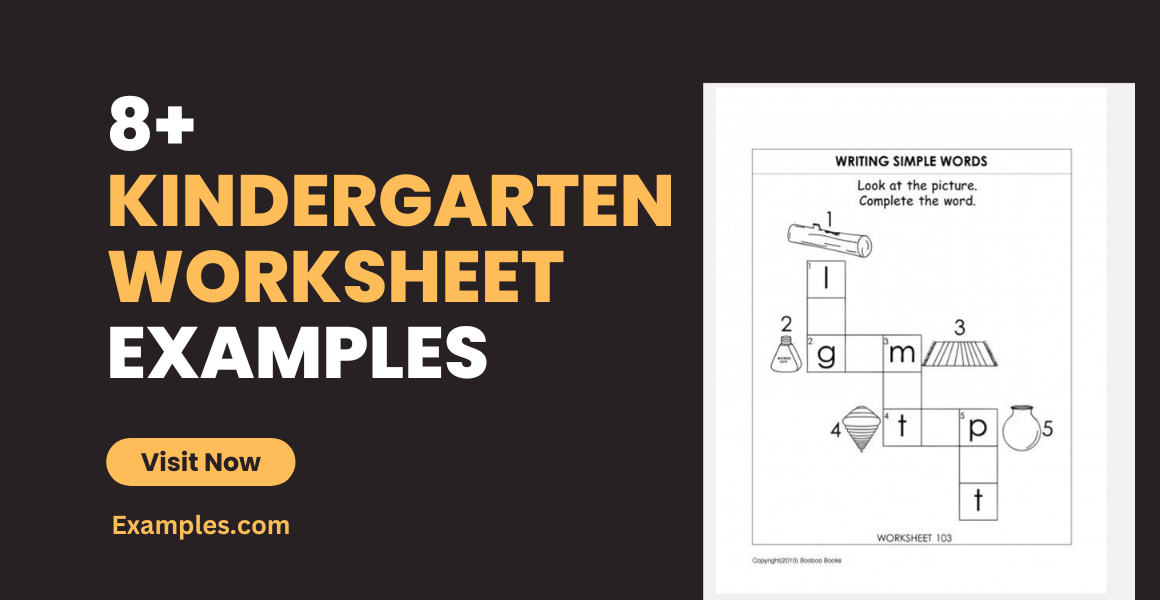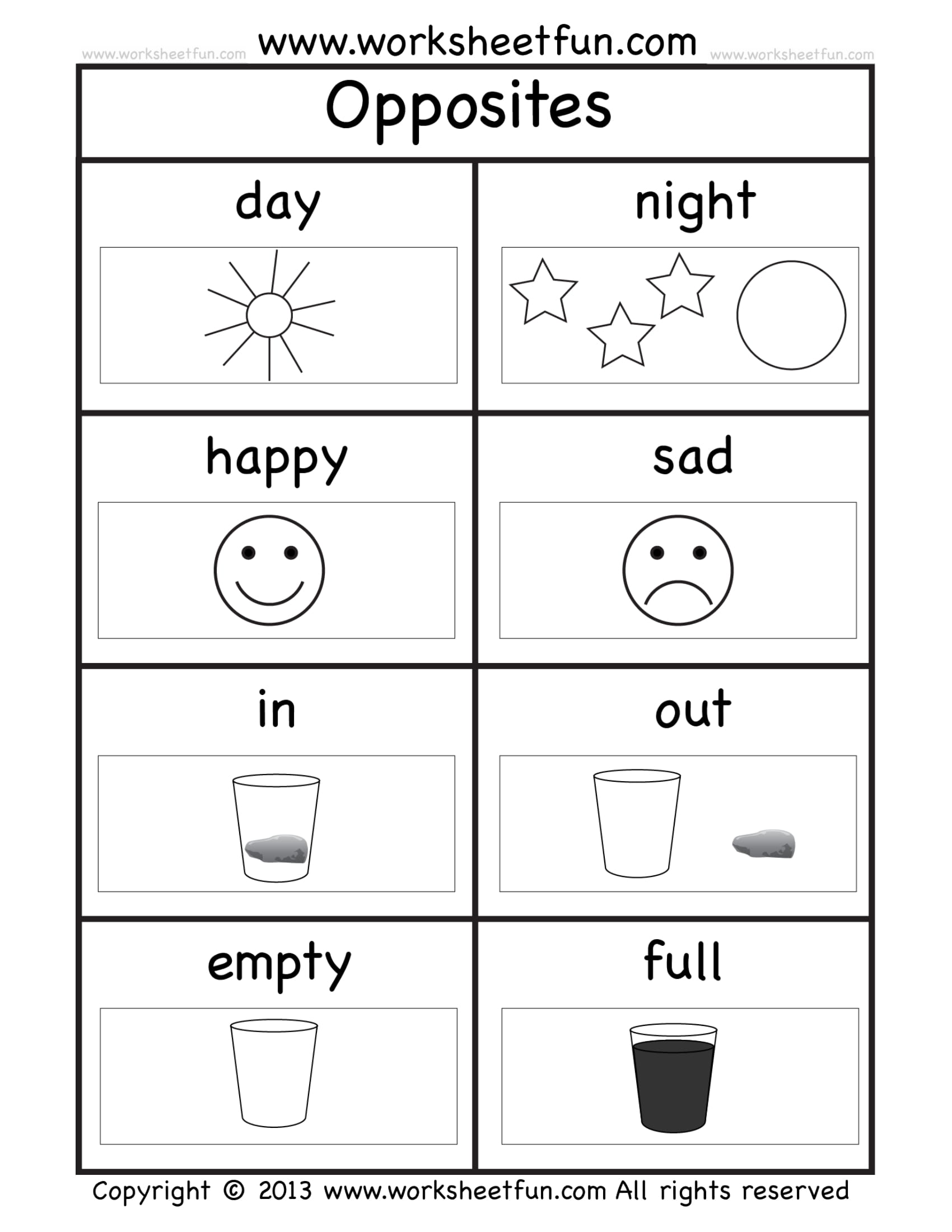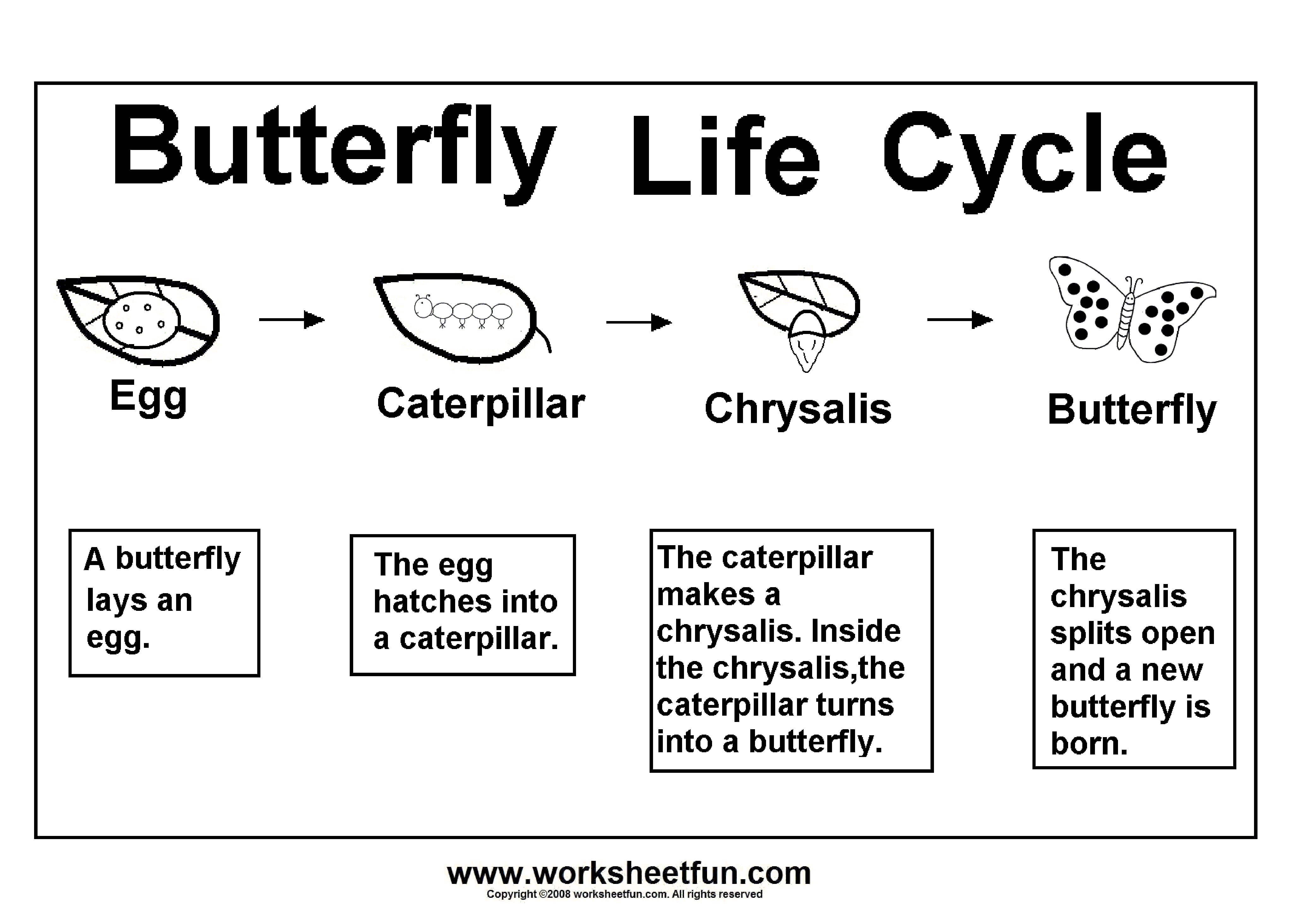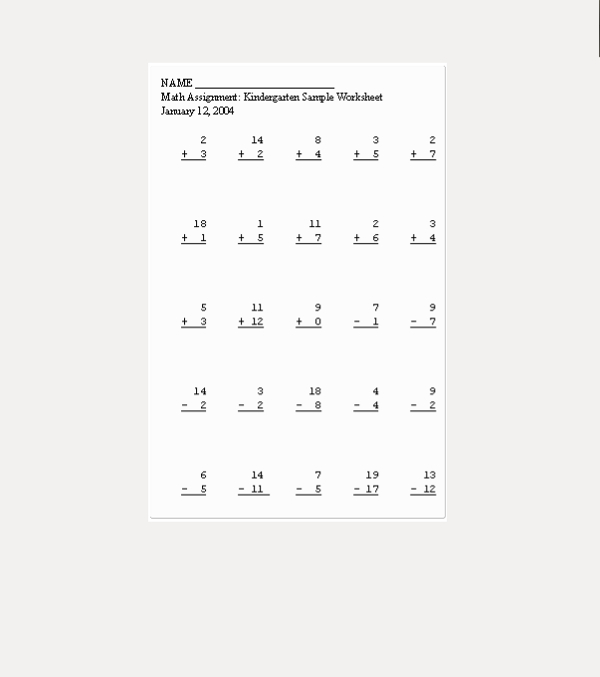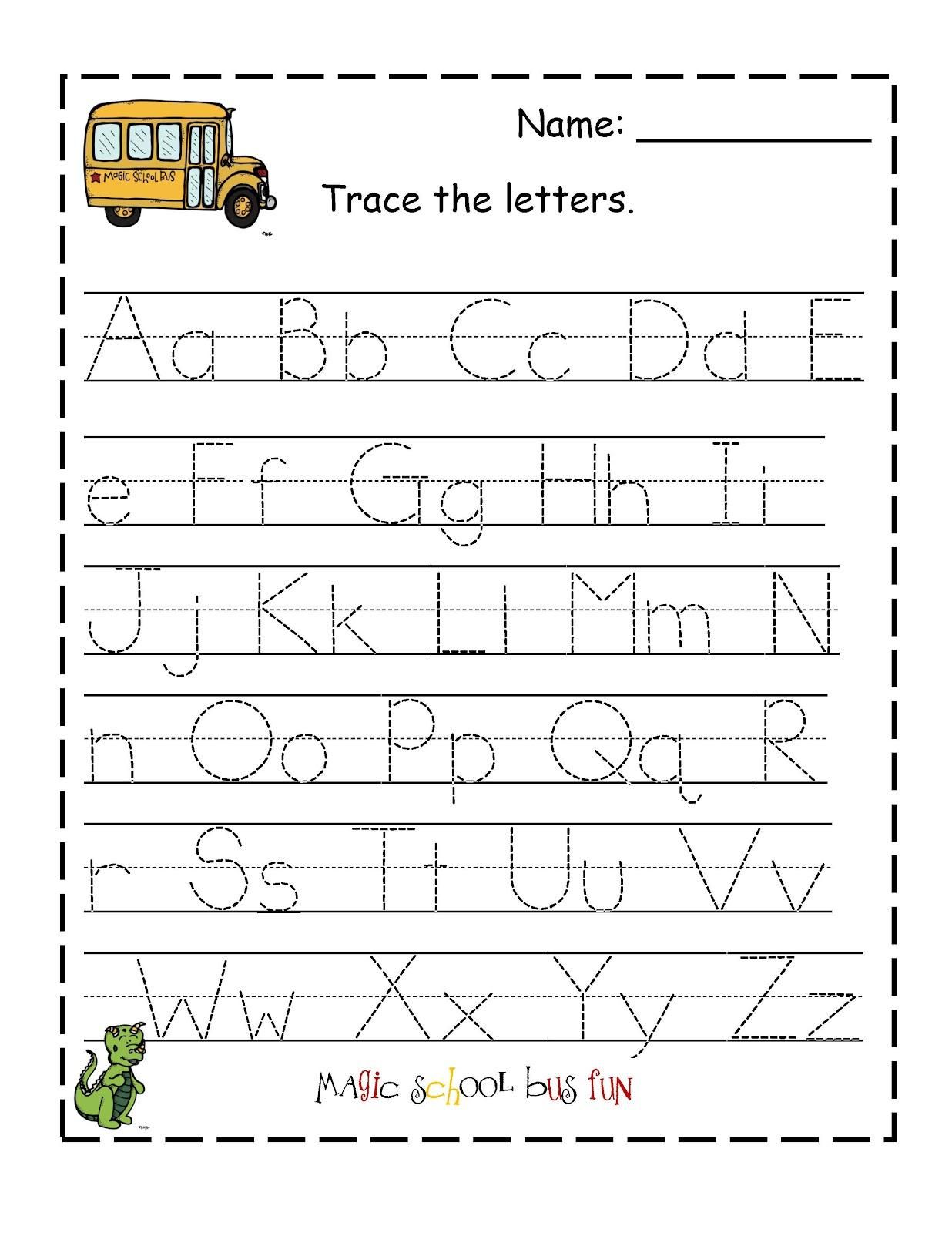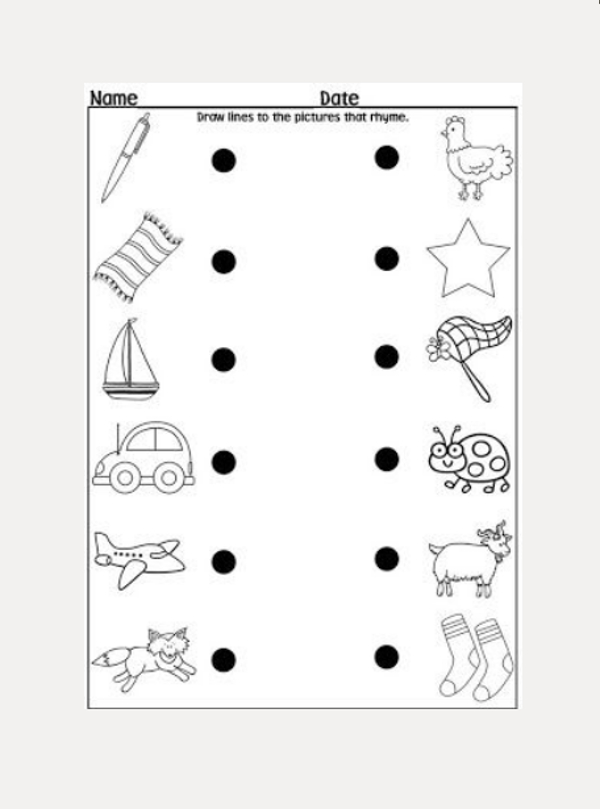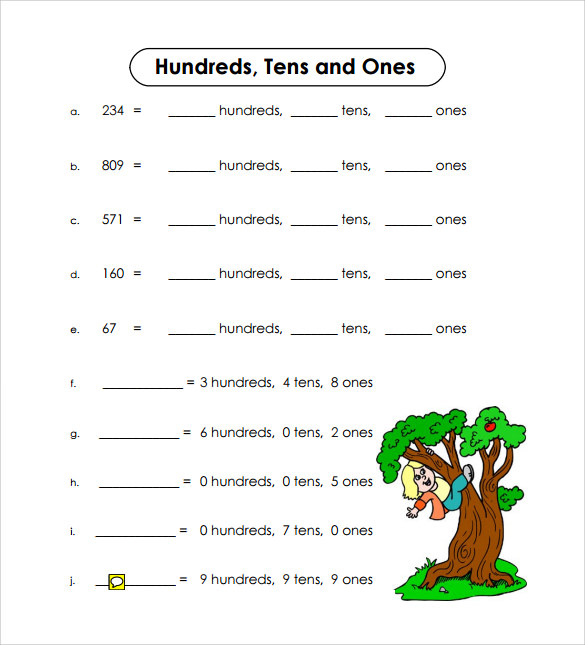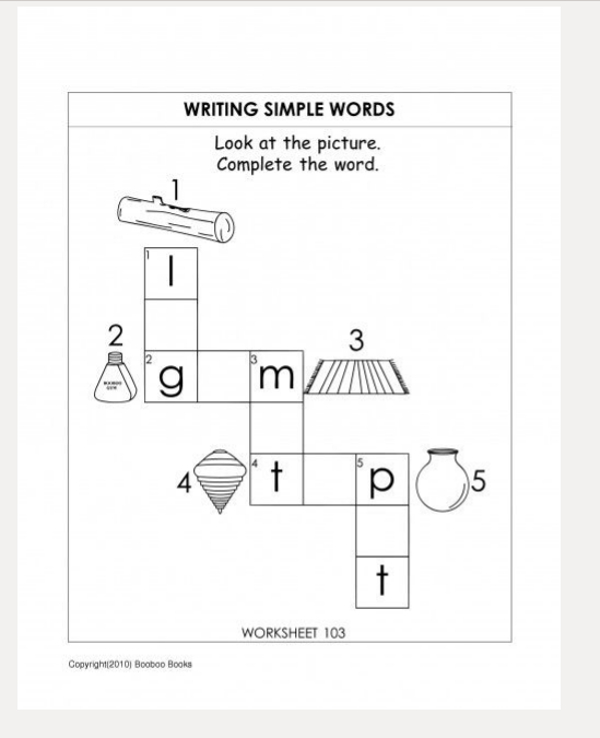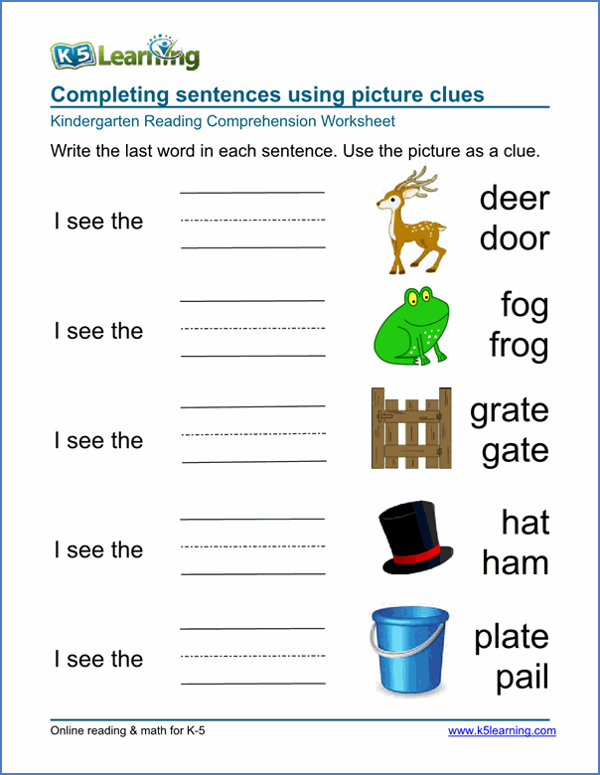8+ Kindergarten Worksheet Examples
Teaching little kids new knowledge should be fun, especially in kindergarten. This is the stage when most kids are introduced to how to read, write, and count numbers. Using worksheets is very useful in helping children learn and reinforce the basic concepts of reading and counting in a very interesting way. It is more stimulating if you use colorful worksheets with lots of drawings. To make lesson planning easier for educators, ready-made worksheet templates can help create engaging activities tailored to children’s learning levels. To effectively inject new learning to little kids, here are some sample tips and advice on how you can teach in the simplest and most interesting way so they understand their lessons right away.
You may also see goal setting worksheets.
Of course, you should not only depend on worksheets as the main basis of the kids’ learning. It should only be one part of the learning. There must be a lot of other exciting activities and games for children to keep their mind and bodies working and energized. Below will give you some fun activities for you to try out for kids to learn. You may also like coaching worksheet examples in pdf.
Opposites Exercise Worksheet Example
Butterfly Life Cycle Worksheet Example
Tips for Using Worksheets for Kids
1. Use worksheets that are appropriate for a child’s level. If they are ages 3-5; provide them worksheets that are suitable for their age. Don’t give them something advanced on their part or they will get lost. Give an easy activity if a child finds any activity too tough. It is important that the child doesn’t get frustrated. Keep in mind that every child has varying levels of comprehension and pace of learning. Some are fast learners; some can understand the matter right away. You may also check out newspaper worksheet examples in pdf.
2. It’s great if their worksheets are well-illustrated. The use of cartoon characters and familiar situations and objects will make it far more interesting and relatable to the child.
3. If possible, try to support each worksheet with a practical, real-life activity. If the worksheets involve reading comprehension, tell them a story first and let them participate in the story telling. You might be interested in alphabet worksheet examples in pdf.
4. Don’t forget a child is learning many new things at once and has an amazing capacity to learn many new things in a jiffy. However, they can also forget them equally as fast as lightning. Do activities to reinforce everything that they’re learning so they will likely to remember it better through time. You may also see time worksheets examples in pdf.
5. Give positive feedback and encourage a child often. Remember, their motor skills are just developing. For example, do not have them write until they are fully comfortable with holding a pencil. Do not delude yourself with high expectations from the children. Spend sufficient time and continually reinforce the learning in day-to-day situations. You may also like expense worksheet examples in pdf.
6. Most importantly, have fun!
There are many workbooks available for kindergarten children. They are all available in bookstores. However, if you can’t afford to buy them big bulks of books, a good option is to use printable worksheets. The advantage is that you can print out whichever sheet you wish to print. Worksheets can usually cover the following content for the first year of kindergarten ( or also known as junior kindergarten):
- Mathematics
Obviously, topics relating to mathematics will start on the basic arithmancy. This can include identification of numbers, numbers in sequence, counting, before-after-between, more or less than, comparison of numbers, and identification of common shapes. You may also see interview worksheet examples in pdf.
- General knowledge:
Topics can include animals, birds, fruits, vegetables, body parts, vehicles, food, days of the week, weather, colors, people at work, and things we do.
- Coloring
- English
Identification of punctuation such as capital letters and small letters, the alphabet, letters in sequence, matching pictures with letters, matching pictures with words, words with short vowel sounds, writing simple words, opposites, similarities, etc. You may also like debate worksheet examples.
Math Assignment: Kindergarten Worksheet Example
Lettering Worksheet Example
Fill in the Blanks Worksheet Example
Why Use Printable Worksheets?
Printable worksheets have lots advantages:
1. You can download them instantly, print them out, and start right away. You don’t have to spend money by ordering them (there are free printable worksheets available) and wait for them to arrive. You may also check out activity sheet examples & samples.
2. You can download worksheets anywhere you are; whether you are at home or at work, or whether you are using a laptop or a smartphone. You don’t have to travel long distances to visit a bookstore.
3. Some worksheets however are not for free. They are usually priced quite reasonably, though this may vary. You have to do your own analysis on this one.
4. With printable sheets, you can print out only the relevant sheets that you need. For example, if the workbook contains sheets that are too advanced or too basic for your child, you don’t need to print those sheets out. This ensures the degree of learning capacity of your children and they will not get frustrated by trying out sheets beyond their skill or get bored by trying out sheets that are too easy for them. You may also see self-assessment worksheet examples in pdf.
5. You can usually print out any sheet as many times as you need. If any of your students need more practice on any particular concept, you can print out multiple copies of those sheets.
Of course, the disadvantage is that you need to have a printer and a supply of ink and paper.
Connect the Lines Worksheet Example
Hundreds,Tens and Ones Worksheet Example
Writing Simple Words Worksheet Example
Completing Sentences Using Picture Clues Example
Other Activities You Can Teach to Kids
While worksheets are a fun learning tool to reinforce basic concepts, you need to try out other activities (specifically physical skills) for better results and for a better experience. In addition, you should try to practice learning by integrating it in day-to-day life. This will make learning more natural, relatable and they can apply it in their daily lives. It will give them a sense of where the learning is going to be really used in life. You may also like reading comprehension worksheet examples in pdf.
A-B-C teaching
Here are a few tips you may consider in teaching children to identify the letters of the alphabet:
- The alphabet song: Perhaps the most basic and useful tool ever. Sing it slowly and distinctly and sing it often. Have a large alphabet chart and point out each letter while you sing. If you can, give all children letter cards in order (alphabet flashcards), they can even hold up each letter as it is sung. You may also see punctuation worksheet examples in pdf.
- Write a letter on the board and have children say it out loud in a chorus. Write it out slowly each time it is said.
- Bring models of the letter (you can make cut-outs of the letter using cardboard) and pass it around to all children.
- Keep models of various formal letters on the table and ask children to pick up the correct letter.
- Write several letters on the board and ask children to choose the right letter.
- Bring objects or models of things that start with that letter. For example: for D, you can bring a doll, or point to a doorknob, a drawing book, and so forth. Let everyone participate in this activity.
- Have different objects on the table. Ask children to pick out objects that start with the given letter.
- Call on a child whose name starts with that letter. They can say, for instance, “Hello, I am Eric,” “M is for Michael” and so on.
- Show them a magazine or picture book. Ask them to identify all instances of the given letter on any page.
- Play “Hunt for the Letter.” Ask children to look around the room and pick up all objects that start with the letter.
- Use coloring pages often. Most children love to color. The coloring pages should have large letters. The pages may also have objects that begin with the simple letter.
- Hand out letter cards to all children. Call out a letter. The child with that card has to come in front of the class and display the letter. This activity can also be done with picture cards. In this case, the child with the picture that starts with the letter called may come and show the picture. Then the class can say in chorus, for ex: “C is cat.” You may also like writing worksheet examples in pdf.
- Divide the class into two groups. Give one group letter cards. Give the other group various objects. The first group will hold up a letter. The second group should hold up an object that starts with that letter.
Easy as 123: Teaching Kids How to Count
Here are a few suggestions you may consider in helping children learn to count and identify numbers:
- You may sing number rhymes like, “One, two, three, four, five; once I caught a fish alive,” aloud to them often.
- Read stories from picture books and emphasize counting. For example, read aloud stories like “The Three Little Pigs” or “Green Eggs and Ham”. Make it a point to count the characters in the picture book. This will enable them to understand the concept that the numbers relate to specific amounts. You may also see budget worksheet.
- Use common objects like crayons, pencils, etc. to show physical representations of numbers. Keep them in groups to show what 1,2,3,4,5 looks like and so on. At first, hold each object when you count. Let the children start slowly first and learn to count up to 3 and then gradually one by one the number will be increased.
- Use every opportunity to practice counting skills in practical situations. For example, a child could count out five candies, seven clays, etc. You may also like swot analysis worksheet examples in pdf.
- The child needs to be able to relate the number to a symbol (i.e identify the shape) of the written number. For each number, bring models of the number (e.g. you can make cardboard cut-outs of the number) and pass around to all children. Try to make enough so that you can give one to each child. They can build up a collection of the numbers 0 to 9.
- Use coloring pages with numbers as objects; as most children love to color. The coloring pages should have numbers in large sizes to color.
Stories to Tell
Kindergarten stories can be very appealing for the kids. You can use stories to teach children too. Videos of animated stories often appeal to children. Stories such as Aesop fables, Mother Goose, Dr. Seuss’s stories, and Roald Dahl’s books are great books for children as they also have lessons to be learned by the children. You might be interested in biography worksheet examples.
Now that you already have the guide for teaching little kids with fun activities to enhance their learning, you are all equipped to go out there and apply what you’ve learned to them. The only thing you need now is the confidence you will exert in teaching these kids. Good luck and remember to have fun. You may also see debt worksheet examples in pdf.


